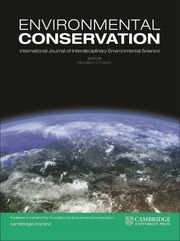No CrossRef data available.
Article contents
Exploring the impacts of biodiversity loss perceptions on preferences and behaviours related to animal fur and skin product consumption
Published online by Cambridge University Press: 11 August 2025
Summary
The drivers of the unsustainable consumption of animal products have been researched, but, to date, no studies have specifically examined the interplay between perceptions of biodiversity loss consequences, beliefs in its existence and significance and the consumption of animal skin and fur products. We explore how people’s perceived consequences of biodiversity loss are associated with their consumption preferences and behaviours related to animal fur/skin products in varying scenarios of biodiversity loss beliefs. Applying Bayesian mindsponge framework analytics to a dataset of 535 Vietnamese urban residents (with 85.05% holding an undergraduate or higher degree), we found that, for people viewing biodiversity loss as real and significant, perceived consequences of biodiversity loss were negatively associated with the preference for animal skin/fur products. Conversely, when they viewed biodiversity loss as unreal or real but insignificant, the association was the reverse. Regarding the ownership of skin/fur products, among those who considered biodiversity loss insignificant, perceived consequences of biodiversity loss were correlated with owning more such products. However, for individuals who saw biodiversity loss as a major issue or denied its existence, ownership remained unaffected by perceptions of its consequences. These findings underscore the need for interdisciplinary research in sociocultural and environmental psychology to improve our understanding of the human–nature relationship and inform evidence-based policies integrating science and humanistic values.
Keywords
Information
- Type
- Research Paper
- Information
- Copyright
- © The Author(s), 2025. Published by Cambridge University Press on behalf of Foundation for Environmental Conservation


